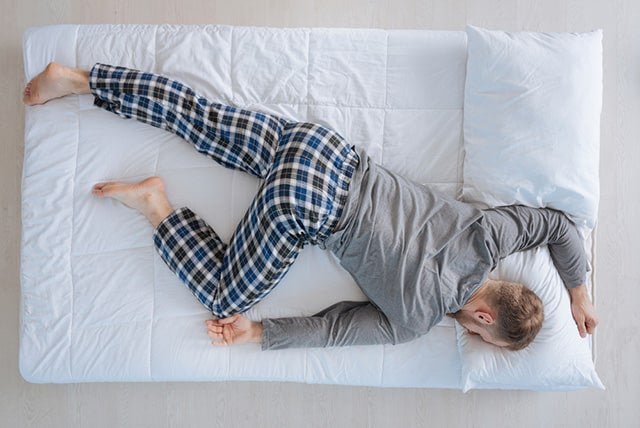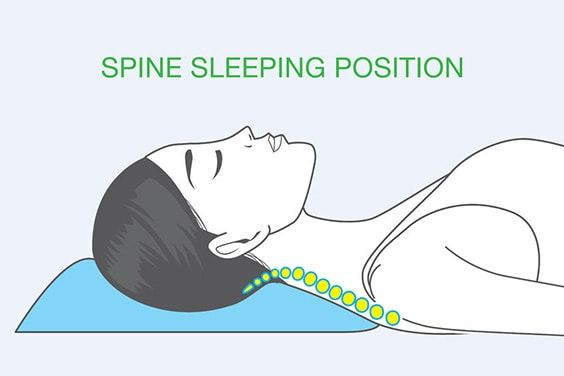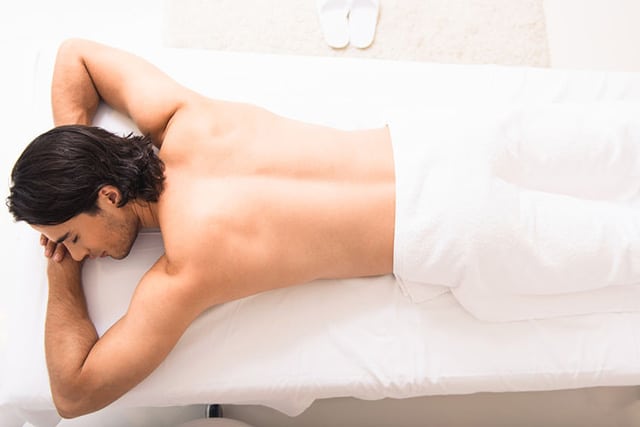Some people love a pile of pillows on their bed, despite essentially only sleeping with one, or two, or three? Why have all those pillows if you are aren’t going to use them, right? So how many pillows SHOULD you sleep with? Actually, how many pillows you use can influence your sleep health for both good and bad–and you should be more aware of HOW those pillows should be used in order to aide in a proper night’s rest.
To start, your sleep health is highly influenced by your cervical alignment. Your pillow usage is incredibly important to sleep posture support. After all, your spine supports your central nervous system, and everything you do has to travel this path. Once compromised, you may struggle to get comfortable: affecting future physical and mental abilities. Below I’m going to outline why you may not want a pillow, when you need a pillow, and how you can best utilize the pillow (or pillows) you have to get the rest you deserve.
Sleep Posture and Pillow Goals
We all fall naturally into a position each night that is comfortable to us. Some people sleep in just one through the night, while others may shift or move as the night progresses. Movement through the night is often caused by the discomfort of some sort, and your goal when searching for sleep products is to find those that support your body in such as way that this discomfort is alleviated. The best night’s sleep is an uninterrupted one, and your pillow plays a very important role in this.
You may be interested in: Is It Better to Sleep Without a Pillow? When you Should and Shouldn’t
Back
Back sleepers have a few advantages going for them: namely, their spine is being held in the most natural, relaxed position it can be. Their pillow goal is to have one that allows their head to rest naturally, which is in line with their shoulders and level with their spine. Proper support is also needed beneath their neck to allow for soft tissue relaxation and avoid neck pain, and may also be needed to alleviate lower back strain.
Stomach
Stomach sleepers are at a distinct disadvantage compared to all other postures and, at no time, are they actually able to keep their spine in correct alignment since they are forced to turn it to one side or another in order keep their airways clear. Their pillow goal is to have one that is non-lifting to alleviate the lower back pressure they may experience due to stress through their hips.
Side
Side sleepers actually make up the largest percentage of positional choices, and many retailers cater to them- providing multiple pillow choices to pick from. They actually have the most awkward position to support, but it is one of the healthiest overall since most products take side sleepers into account in their design process. Their pillow goal is to have a supportive pillow that can both hold their head level between the vertical placement of their shoulders and fill the gap left under their neck.
Pillows and Spinal Support
From what I’ve explained about sleep positions above, you can most likely already tell that your pillow choices can highly influence where your neck and head should be placed through the night. Because of this, you really should choose JUST ONE pillow to use beneath your head, and take the time to ensure you have chosen the best to support your body through the night. It is critical that you provide a pillow that allows your head and neck to be in a correct position with the rest of your spine. So which pillow is truly best for your sleep position, and what about all those extras?
Pillow Choices for Sleep Positions
In picking your one pillow to use, you need to consider the following in making your choices. There is no one size fits all pillow, and every choice you make in your purchase of the correct pillow should be determined by not only through personal preferences but also by sleep position, body type, weight, height, and shape.
Back Sleepers
Back sleepers need a thin pillow support that provides enough lift to hold the head between the shoulders at level with the rest of the spine. If the pillow is too high, it will lift the head and create discomfort. Not only can the airway become compromised and possibly complicate snoring problems (or create them), it will create stress to the neck as well as lower back. If the pillow is too thin or soft, it will allow the head to fall too far back. This also compromises the airway and will create stress to the neck and back. These pillows also need to have enough fill to properly create support for the neck and allow for the soft tissues of the upper back and neck to relax. Plush pillows that provide a firm but responsive support made from memory foam, shredded foam, buckwheat, and dense feather fills are the most popular.
Stomach Sleepers
Stomach sleepers actually would benefit from no pillow at all in order to allow the spine to lay as flat as possible. But most people truly are unable to get comfortable without something to lay upon due to the pressure upon the head and ears. The most important thing to keep in mind is to keep the head as flat as possible and provide support that allows for a cushioning of the head and ear as well as the top of your shoulders. Soft, thin, and malleable pillows that use down and feather, or shredded memory foam fills, are the most popular with stomach sleepers. Thin memory foam pillows that are more pad like in feel and shape are also a great choice.
Side Sleepers
Side sleepers need a thicker, gusseted choice that can hold the head level between the shoulders but also provide the thickness to fill the space under the neck. They also need to be malleable enough to give in to the pressure of the shoulder against the side of the pillow. Pillows of any fill type are generally used based on personal preference for feel. Feather and shredded foam can be shaped to a specific feel and support, whereas memory foam provides enough give and contouring to fit the weight of the head and provide neck support.
You may want to read: Best Orthopedic Pillows for Side Sleepers
Alternate Pillow Uses
Ok multiple pillow lovers, this is where you can put another pillow to good use. But only if it isn’t under your head. Back sleepers can benefit from placing a pillow beneath the knees in order to help lengthen the spine and take pressure off the lower back. A pillow can also be rolled and placed under the neck for added support. Stomach sleepers should place a pillow beneath the hips in order to help take pressure off the lower back and allow the spine to better level out. A good thin or soft contouring pillow works best for this.
Side sleepers can benefit from placing a pillow between the knees. This supports the hips and helps keep the spine aligned. It also can provide relief if pressure points are an issue as well. Usually, soft malleable pillows that aren’t too thick but meet your personal preferences are what work best when used in this manner.
Conclusion
If you wonder how many pillows you need, all you truly need is one good proper pillow fit. And honestly, that is all you should have beneath your head to comfortably sleep. If you want to take advantage of other pillows, do so to help better support your spinal alignment and provide relief to pressure points. Taking the time to find the proper pillow is well worth the extra time and effort it takes. A good pillow that provides proper neck and back relief, and allows you to sleep uninterrupted through the night is what you should always keep in mind as a goal for your own comfort.








